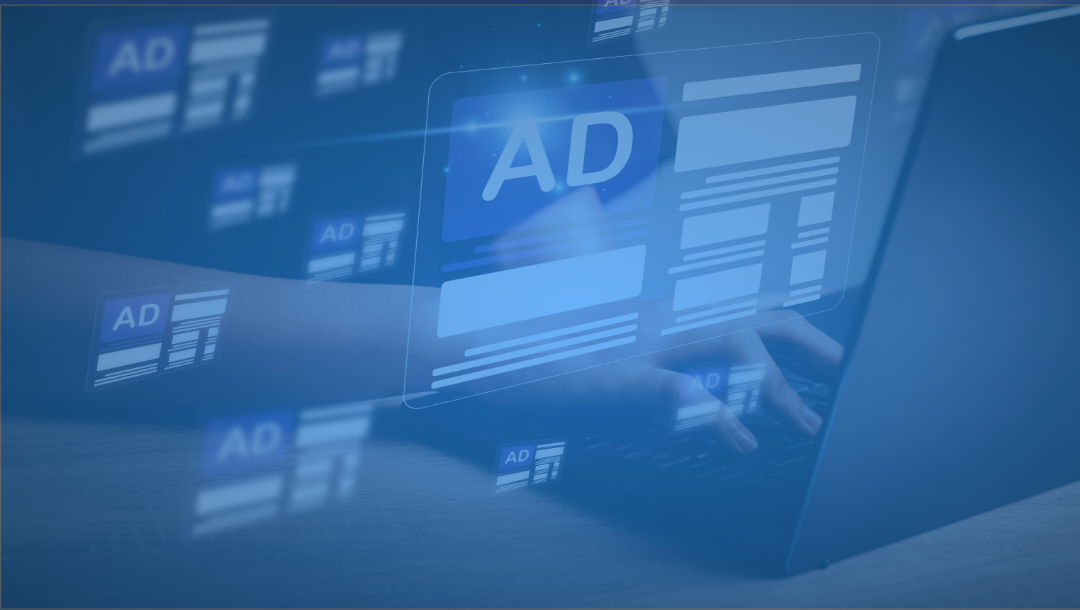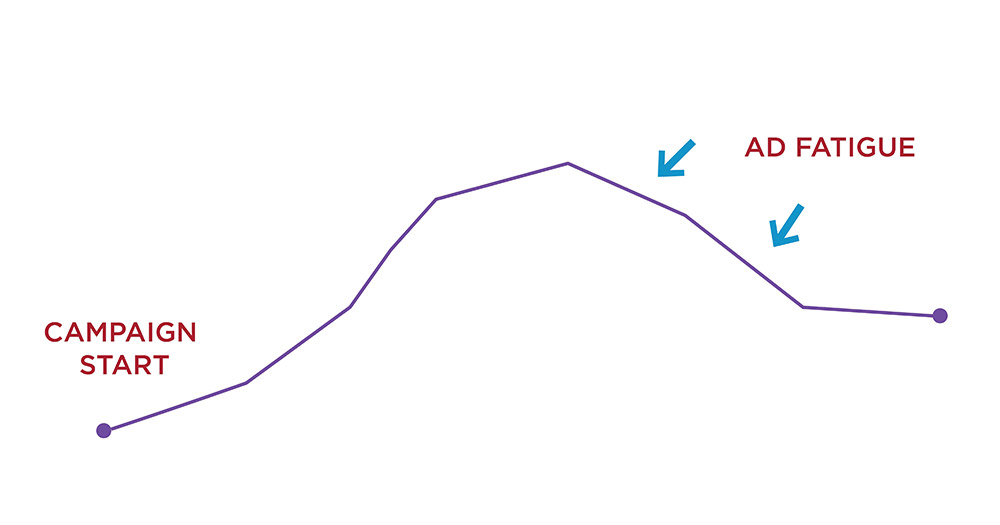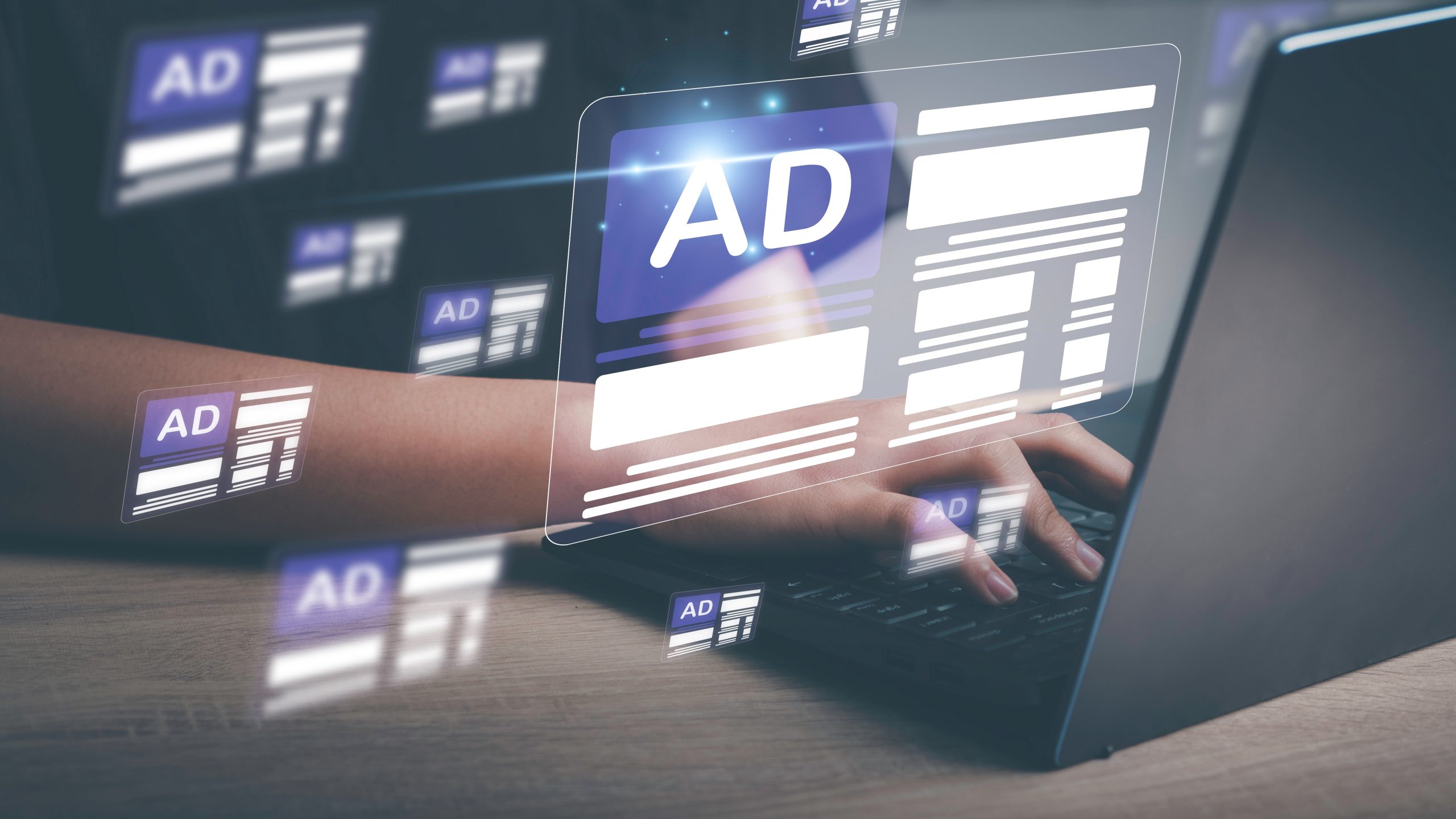
Как не утомить аудиторию рекламой
Advertising fatigue, banner blindness, ad fatigue, etc. is a phenomenon in which the audience gets used to the advertising format and begins to perceive it as background. Website visitors may bite on an ad the first time, the second time, but with each subsequent display, even the most converting creatives become boring and stop working. Advertising fatigue is a problem that needs to be solved here and now, otherwise click-through rate (CTR) and conversion rate (CR) will quickly drop to zero. Today we will talk about the psychological prerequisites for such fatigue and tell you about ways to combat it.
Advertising fatigue and why it is dangerous to ignore
Advertising apathy is a common phenomenon in which audiences become accustomed to frequent advertising and stop perceiving advertising as a source of information. Even the most original marketing campaign can become boring and become background noise.

Via HenkinSchultz
The more tired you are of advertising, the lower your campaign metrics such as CTR and CR will be . To regain attention, you need to add something new: update your creatives, target a new audience, or tweak your campaign settings. If the cost per click (CPC) is going up, while the clickability (CTR), on the contrary, is falling, it looks like your creatives have become boring to your audience.
It’s worth noting that some platforms, like Facebook , intentionally increase the cost of impressions for outdated ads in order to punish advertisers for not updating. Social networks value engaging content above all else, so if the audience is tired, it’s time to update your campaigns. If you don’t know how, head to Yep Ads for support and ideas.
The Causes and Nature of Advertising Fatigue

Via Pixabay
Like it or not, people’s attention spans are very limited , which is why they quickly become tired of information overload, even if the advertising is engaging. But what exactly causes fatigue? There are two reasons: importunity and overload.
Persistence
According to the law of diminishing returns, the more often the same ad is shown, the weaker its effect . This can be explained by emotional burnout: as a rule, advertising appeals to feelings, such as fear or passion. However, the audience will inevitably get used to it if you use the same triggers. The same applies to similar creatives whose visuals are indistinguishable from competitors.
Information overload
According to the website Askwonder , US residents consume up to 34 gigabytes of information daily , which is about 100,000 words (including radio, television, the Internet, and printed materials). With such a volume of information, it is not surprising that users do not want to hear about any sales. Intrusive advertising is a rude invasion of the user’s personal space, which can cause the user to begin filtering information in response, becoming indifferent to advertising.
Information overload and intrusiveness are the main causes of advertising fatigue that need to be addressed in your campaigns. But what can you do specifically?
Preventing Ad Fatigue

When a user’s attention level drops, it needs to be won back by making changes to the advertising funnel. Precise targeting, personalized messaging, and good optimization are the keys to engaging, relevant, and, most importantly, effective advertising.
You can combat advertising fatigue either by directly influencing the user and their emotions, or by focusing on the ad itself and optimizing the funnel.
We influence the user

Via Freepik
As the title suggests, here we’ll look at subjective approaches to eliminating advertising fatigue. Feelings are the foundation of marketing, so it’s worth dwelling on them in more detail.
- Segmenting the audience : when choosing a target audience, it is important to maintain a balance between accuracy and practicality. Segmenting the audience down to each person and creating a separate ad copy for each segment is madness, bordering on fantasy. On the other hand, a standardized ad will not hook anyone. Therefore, we collect as much data as possible and segment the audience into moderately homogeneous groups. Do not forget about retargeting, for example, this way you can sell additional software to a client who recently bought a computer.
- Limiting the frequency of ad impressions : more is not always better. By limiting the frequency of impressions during a certain period of time, you can maintain brand recognition without overwhelming the user with overly intrusive advertising.
- Diversify formats and creatives : the more advertising channels are used, the better. Outdated ads can be updated with new visuals, text, or action buttons (CTA). To prevent advertising from becoming boring, creatives need to be updated regularly and rotated. This is especially true for push notifications, which are the fastest to get used to due to their prevalence. Don’t forget about split tests for maximum results.
- Expanding the audience : a hopelessly outdated creative for one audience segment may be a novelty for another. Try expanding your reach so that creatives convert again. Sometimes you can dig up a gold mine by setting targeting settings contrary to generally accepted stereotypes, so experiment.
All of the above approaches help eliminate advertising fatigue on a personal level. However, human psychology is a fickle thing. So let’s talk about something more reliable — funnel settings.
Optimizing the funnel in the campaign
The marketing funnel consists of several components, each of which can be changed to give your advertising a new look. What exactly can you change?
- Text : simply change sentences, or better yet, enable keyword rotation. Experiment with different hooks, value propositions, and action buttons: audiences can respond to both short emotional appeals and comprehensive descriptions with a bunch of facts. To understand how keyword rotation works, we recommend paying attention to the Google Ad Customizers tool .
- Creatives : You can keep your audience’s attention by changing the background color, rotating images, choosing a new graphic style, or simply using an abundance of illustrations. Remember, design is not limited to images and includes fonts, layout, color palette, and more.
- Video : As with images, it’s best to have several creatives that match the goals of the campaign: product reviews, testimonials from satisfied customers, or simply educational content. Add subtitles, rotate, cut, swap videos, and use “uniqueizers” to make your video stand out from the crowd. In general, the video format is very popular now, and if you don’t know where to start, study the latest trends in TikTok Insights and Facebook Ad Library, and then move on to spy tools.
- Landing : the overall design of the site and the landing page should visually match each other so that the transition is as smooth as possible. It is important that the landing page and pre-landing page are updated regularly, since the effectiveness of even the best creative rapidly decreases against the backdrop of a monotonous landing page. Therefore, we adapt the landing pages and do not forget about rotation within the campaign.
- Platforms : new media sources kill two birds with one stone: expand the audience and mitigate the already established fatigue from advertising. Facebook is the workhorse of arbitrage, but you can’t live on it alone. Try TikTok, Telegram or Instagram to increase your reach, especially if the caps on the main media channel are exhausted, and you want to increase the number of impressions. If you have an iGaming campaign, adapt the funnels for chats, messengers and thematic groups in social networks. And if you prefer e-commerce, nutra or leadgens, then be sure to check out the list of non-trivial traffic sources for better coverage of the target audience.
How to and how not to
Let’s summarize with a list of useful ways to combat ad fatigue:
- Segmenting the audience to improve personalization
- Stock up on creatives, texts and platforms so that plan B is at hand
- We personalize messages so that the recipient feels important
- We regulate the frequency of ads by setting daily (any other) caps
- Minimize information overload through pre-landings , where you can describe all the benefits of the product and free up other parts of the funnel
- Expanding the audience to include people with similar tastes and preferences
- Preventing Ad Fatigue Early by Experimenting with New Marketing Ideas and Concepts
If the goal is to make campaigns profitable, then you shouldn’t ignore the points above. However, there are a couple more details that are important to know:
- Over-segmenting your audience can be counterproductive to micromanagement, so segment with the question, “How do I manage this?” in mind.
- Neglecting split tests not only breaks time-tested ideas (since context matters), but also prevents you from discovering your own revolutionary ones.
- Advertising fatigue is not a reason to make changes without regard for user convenience; always keep the end consumer in mind
Conclusion
Ad fatigue is a problem that affects such important metrics as click-through rate and conversion. If click-through rate, user engagement rate, and impressions are falling while cost per click and bounce rate are rising, don’t panic. The first step is to stop the campaign. This won’t improve your creatives, but at least you’ll save your budget and gain time to think about and make changes.
During this time, you can tweak personalization, add a frequency cap, and start exploring new advertising formats. All this allows you to maintain user engagement at a high level. In addition, you can improve texts, creatives, and landing pages for even greater interest from the audience. Advertising fatigue is not a death sentence, the main thing is to monitor key campaign indicators and be open to changes. And we at Yep Ads are always happy to help you in your marketing endeavors, good luck!
